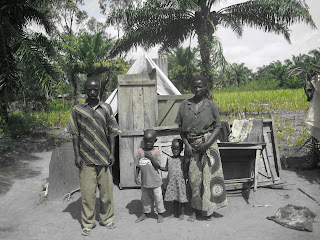 This concludes my East Africa World Relief Journey. I’ve returned home inspired by the many ways that World Relief is empowering the local Church to serve the most vulnerable.
This concludes my East Africa World Relief Journey. I’ve returned home inspired by the many ways that World Relief is empowering the local Church to serve the most vulnerable.I am convinced that community transformation can only be achieved by addressing the social, economic and spiritual well-being of those we serve. In Rwanda, Kenya and Burundi, I witnessed World Relief and the local Church helping to build the skills and capacity of the community to clean up their own water, grow their own food, care for orphans and vulnerable children, prevent HIV/AIDS and provide HOPE for tomorrow.
I am reminded of the important words below from Inoga Emmanuel, one of the founders of WR's HIV/AIDS program. Ingoga Emmanuel, World Relief Rwanda – Oct 14, 2005 :
“The government (of Rwanda) has provided security for a new Rwanda, but they cannot change the heart. This is the work of the church. World Relief’s desire is to help the local church act as the body of Christ without World Relief. The Church has all the resources necessary for a healthy community.
World Relief’s new role is to connect the church in Rwanda with the church in America and allow the body to function together – compensating for wounds and broken parts but with love and understanding, always defending the body just like one arm defends and protects its broken brother.
World Relief helps the church look inside itself to find what powers and capacities it has hidden within in order to respond to the needs in the community. They see and own the ministries – growing from a heart of worship, strengthened by an understanding of God’s power for leadership – even in the worst of times.
We are helping churches think about Diaconal Ministries. World Relief comes with some competencies but the church picks up on others.”
Thank you for being with me on this journey. Please continue to follow World Relief’s journey by checking the website at http://www.worldrelief.org/ for updates often!
“The government (of Rwanda) has provided security for a new Rwanda, but they cannot change the heart. This is the work of the church. World Relief’s desire is to help the local church act as the body of Christ without World Relief. The Church has all the resources necessary for a healthy community.
World Relief’s new role is to connect the church in Rwanda with the church in America and allow the body to function together – compensating for wounds and broken parts but with love and understanding, always defending the body just like one arm defends and protects its broken brother.
World Relief helps the church look inside itself to find what powers and capacities it has hidden within in order to respond to the needs in the community. They see and own the ministries – growing from a heart of worship, strengthened by an understanding of God’s power for leadership – even in the worst of times.
We are helping churches think about Diaconal Ministries. World Relief comes with some competencies but the church picks up on others.”
Thank you for being with me on this journey. Please continue to follow World Relief’s journey by checking the website at http://www.worldrelief.org/ for updates often!
With Blessings and Joy, Nancy Green








































